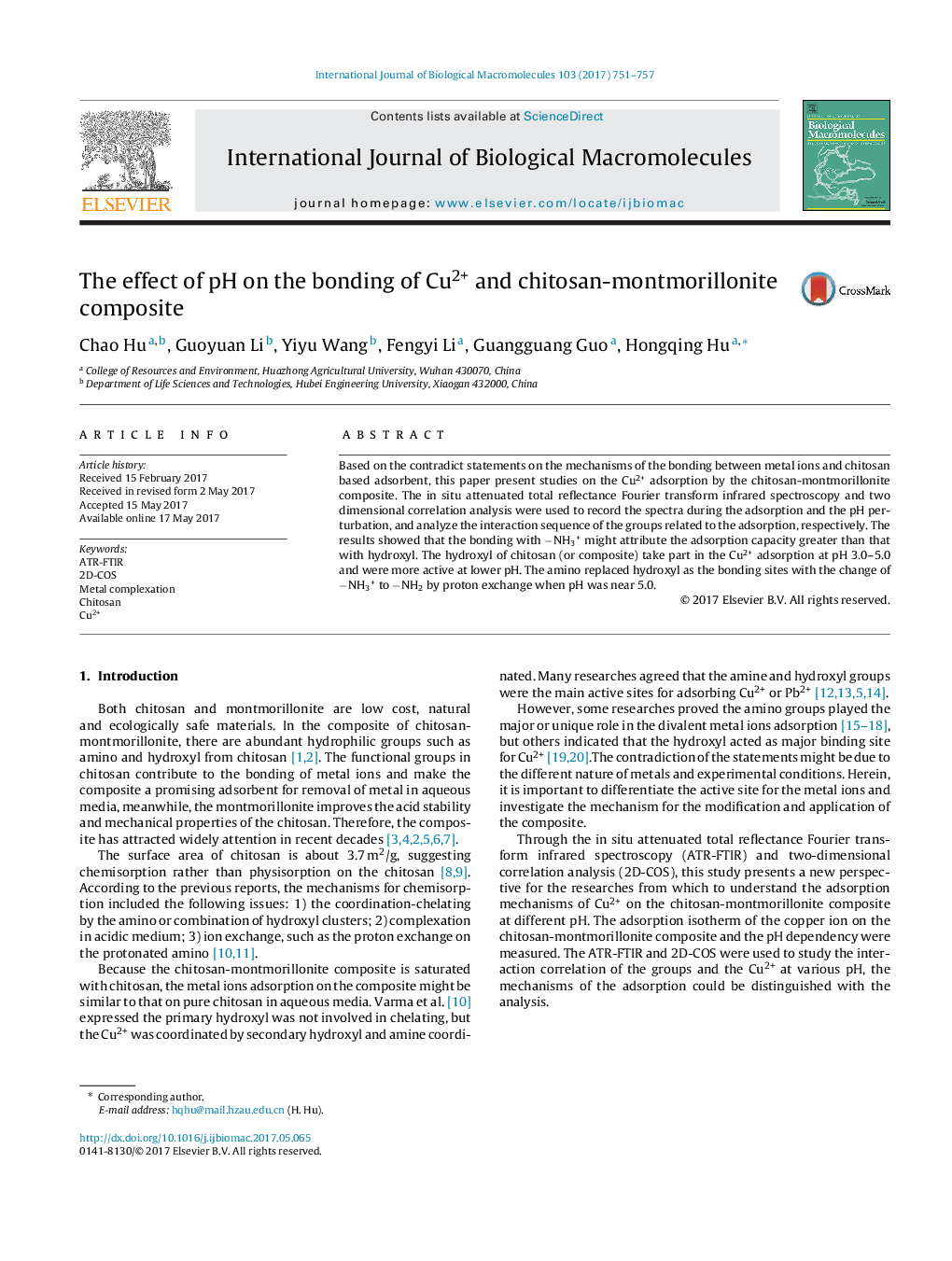| Article ID | Journal | Published Year | Pages | File Type |
|---|---|---|---|---|
| 5511908 | International Journal of Biological Macromolecules | 2017 | 7 Pages |
â¢Bonding with amino in chitosan contribute main adsorption capacity.â¢Amino bond with copper ion near pH 5.0.â¢Hydroxyl was more active at pH 3 than at pH 5.
Based on the contradict statements on the mechanisms of the bonding between metal ions and chitosan based adsorbent, this paper present studies on the Cu2+ adsorption by the chitosan-montmorillonite composite. The in situ attenuated total reflectance Fourier transform infrared spectroscopy and two dimensional correlation analysis were used to record the spectra during the adsorption and the pH perturbation, and analyze the interaction sequence of the groups related to the adsorption, respectively. The results showed that the bonding with âNH3+ might attribute the adsorption capacity greater than that with hydroxyl. The hydroxyl of chitosan (or composite) take part in the Cu2+ adsorption at pH 3.0-5.0 and were more active at lower pH. The amino replaced hydroxyl as the bonding sites with the change of âNH3+ to âNH2 by proton exchange when pH was near 5.0.
